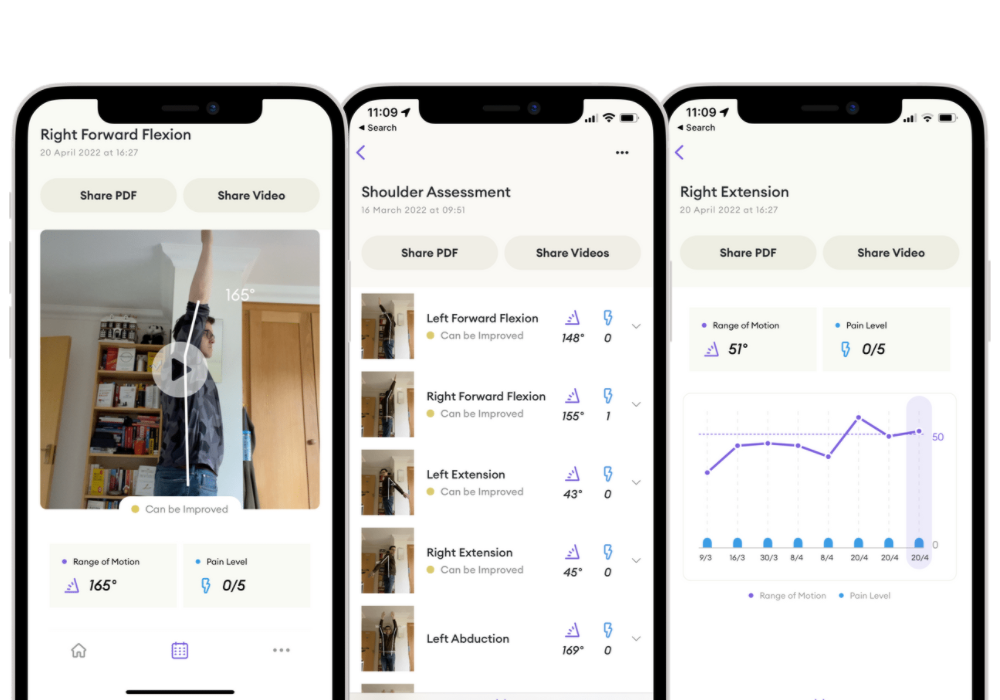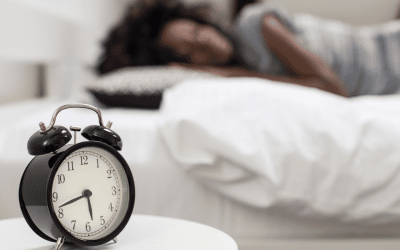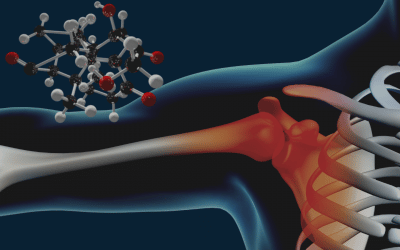Using a massage gun on your shoulder can help improve blood circulation and reduce pain and inflammation. Massage guns are a great way to give yourself a quick and easy massage, and can be used on any part of the body that is experiencing pain or inflammation.
What is a massage gun and what are its benefits?
A massage gun is a handheld device that uses percussive, vibration therapy, or both to provide the effects of a myofascial release.
- Massage guns are a great way to relieve muscle pain and stiffness, by improving the blood circulation to the tired and taut muscles.
- The increased blood supply facilitates the removal of waste products and other metabolites like lactate thereby improving the recovery of the muscles.
- They are also used to relieve the Delayed onset of Muscle Soreness(DOMS), and as a pre-workout therapy to increase muscle performance.
Massage guns are relatively new devices, but they have quickly become a popular choice for people looking for a quick and easy way to give themselves a massage, decrease pain and facilitate their recovery.
How to use a massage gun on your shoulder
To use a massage gun on your shoulder, start by finding a comfortable position. You can sit or stand, but you must be able to keep the gun steady and perpendicular to the part you are trying to massage while you’re using it. Next, place the massager head against your skin and turn on the device. Start with a low setting and gradually increase the intensity as needed.
The shoulder region has many small and large muscles which get painful at specific points. Also, many sensitive tissue areas are present which might get sore quickly with a high-pressure massage compared to the lower body. For example, it is difficult to use a massage gun on a pectoral, axilla, or around the adjoining neck region, especially with a pointed head.
Small and sensitive muscular structures: Upper trapezius, Pectorals, and SubscapularisSubscapularis is a muscle and tendon that connects the scapula to the front of the head of the humer More
It is better to massage gently with lower amplitude and frequency in these areas with a flatter head, especially if you are trying out for the first time. A better option can be using a vibrating massage ball for self-myofascial release compared to pointed percussive guns in these areas.
Large muscles with relatively less sensitivity:
On a large surface area, a vibration gun can be therapeutic on the bigger muscles of the shoulder like the latissimus dorsi and upper trapezius.
You need to manoeuvre the device in different parts, hence a good ergonomic handle is a must. Try to take the massager overhead and try to massage your upper trapezius, ideally it should not strain your shoulder much.
For large muscles, a vibratory foam roller can also serve well, as you can lie down sideways and actively release your tight latissimus dorsi.
Posterior Shoulder muscles:
The smaller posterior deep muscles like the rhomboids, middle trapezius, teres major, and minor are difficult to reach by oneself and can be better massaged with help from an assistant or a friend. A prone position gives better access to these muscles as these muscles are covered by the larger muscles latissimus dorsi and trapezius.
The superficially placed deltoids:
The deltoids can be easily massaged by you by a massage ball, but the posterior deltoid might become difficult to massage by self and might require some assistance.
The subscapularis, the most common muscle to get tight quickly and limit the external rotationThe range of shoulder external rotation is one of the most important metrics in the field of general More, is also difficult to massage by oneself with a gun. An overhead position of the hand and just massaging the outer aspect of the armpit, at the outer border of the scapula can help to a certain extent. But in this case, a therapist-guided vibration therapy or a self-myofascial release with a ball can help better.
Does a massage gun help with shoulder recovery?
If you have a shoulder injury, recovery is measured by range of motion and pain. Full recovery means you can move your shoulder through its full range of motion without pain. Measure your shoulder recovery with Reflex: Shoulder Mobility App.

What to look for when buying a massage gun
When choosing a massage gun, it’s important to consider the following factors:
Whether it is a percussive or a vibration-based massager device:
This can be understood concerning the treatment head shape. A vibration device head is generally flat, while that of a percussive device is pointed or rounded to drive it further in.
Whether it’s for a self-use or professional use:
A personal use too can be very simple and easy to carry, keeping in mind the specific muscles of the shoulder which are tight.
For professional use, chiropractors, physios, and athletic trainers, a set of tools can help in customising the experience of their clients for the specific muscles.
Intensity:
Massage guns come with different amplitudes and frequency levels, so be sure to choose one that’s appropriate for your needs. If you’re new to using massage guns, it’s a good idea to start with a lower setting and work your way up.
A good massage device has a frequency setting of 10 to 60 Hz with 2 to 6 mm of amplitude penetration.
The build and the body of the device:
A metallic body and a sturdy head help deliver the pressure at a suitable frequency. Some massage guns have heads fully made of plastic which can give away with an added pressure.
The foam rollers and massage balls with vibratory function can be used for specific muscles without much use of hands, and are easy to carry.
Massage Head:
The flat metallic head with a bigger contact surface area is helpful for the larger muscles of the body. The flat head goes well in delivering the vibrations at a higher frequency than the percussive device, but a percussive device has the benefit of deeper mechanical stimulation. The use of massage oils and inflammatory creams is easier with flat heads compared to rounded and pointed ones.
The percussive devices come with a variety of heads, which can be used on different body parts, depending upon the girth of the muscles. The pointed heads can be used on the deeper muscles like pyriformis, upper trapezius, and underlying layers of latissimus dorsi. The split-pointed head can be used for erector spinae muscles alongside your spine.
You need to adjust the intensity and the treatment head according to the pain or soreness you are feeling around the shoulder jointThe glenohumeral joint is a ball-and-socket synovial joint and is the most mobile joint in the human More.
Battery life:
Massage guns can be plugged into the plug socket or have batteries installed that are rechargeable. High end massage guns tend to have longer battery life, whereas low price options will need to be charged more frequently. For home use, most massage guns can provide sufficient battery charge to treat yourself, even the low end models.
Weight and Ergonomic design:
Massage guns can vary significantly in terms of weight, so be sure to choose one that’s comfortable for you to hold.
Noise level:
Some massage guns are louder than others. If this is an issue, you may find it’s worth spending a little extra for quiet or ultra quiet models.
Heat/Cold temperature option:
Some massagers have the control to adjust the temperature of the moving head. It is an add-on, but not an essential one if on a tight budget.
Price:
Massage guns can range in price from around $50 to $500, so be sure to choose one that’s within your budget.
What are the types of self-massage devices available in the market?
There are two types of massage devices available in the market.
The vibration therapy and percussive therapy-based massagers.
Some messages have both, percussive and vibratory controls in a single device.
These massagers come in different shapes, sizes, and added functions of temperature modulation.
Heating pads or sleeves are also designed to give vibration therapy, which can be worn as a wrap around the joint and extremities.
Vibrating foam rollers are available, which can be rolled along the body parts and kept statically at points of tissue restrictions, to deliver vibrations at those points.
What is the difference between Vibration therapy and Percussive therapy massage?
Vibration therapy is based on delivering waves of oscillation that travel inside the body, among the different tissues, and bring about changes in blood circulation. The heads of the devices are generally flat and metallic, and generally deliver higher frequency waves than a percussive device.
Percussive therapy also uses vibrations, but the heads of the devices are designed in more of a rounded and pointed way to penetrate deep into the tissue in form of a piston movement. Percussive therapy can be thought of as combining the parts of conventional massage and vibration therapy.
Vibration therapy has been extensively studied and a vast literature exists to prove its efficacy, while the percussive therapy devices have been recently innovated and research is still an ongoing process.
What is the difference between the Amplitude and Frequency of the massage gun?
Frequency and Amplitude are both the variables of a massage device that determine the intensity of the massage.
Frequency is the rate of repetition of cycles of oscillations delivered to the body per minute. It is measured in Hertz (Hz). Low-frequency guns have frequencies from 15 to 50 Hz, while high-frequency guns have a frequency from 100 to 170 Hz.
Amplitude is the extent to which oscillatory movement happens in terms of displacement away and towards the body. It is measured in millimetres(mm).
Before buying a gun do get a trial of different frequencies and amplitudes to understand what suits you the best.
Best Massage Guns
Vibration Therapy Massage Guns
MedMassager Chiropractic Body Massager
Theragun | Wave Roller | Vibrating Foam Roller for Full-Body | Bluetooth Enabled
Brookstone Max Hot & Cold Vibration Massager
Percussive Therapy Massage Guns
Hypervolt Bluetooth, Featuring Quiet Glide Technology – Handheld Percussion Massage Gun
LifePro Sonic Pro Percussion Massage Gun Deep Tissue Percussive Back Massager Device for Pain Relief
Alternative Devices for Shoulders
Hyperice Shoulder Cold Therapy – Left
Lifepro Sonic LX Quiet Pro Percussion Massage Gun, and Waver Vibration Plate Exercise Machine Bundle
FAQs about massage guns
Q: Can massage guns be used on all parts of the body?
A: Yes, one can use massage guns on any part of the body that is experiencing pain or inflammation. The intensity and treatment head of the massage gun should be adjusted Depending upon the part of the body, span, and girth of the muscle.
Q: How often should I use a massage gun?
A: There is no one-size-fits-all answer to this question, as it will depend on your individual needs. If you’re using a massage gun to relieve pain or stiffness, as a recovery drill you may want to use it several times per day. If you’re using it for general relaxation, once or twice per week may be sufficient.
Q: How long should I use a massage gun on each area of my body?
A: Again, there is no one-size-fits-all answer to this question. However, a general rule of thumb is to massage each area moving for 2 to 10 seconds for 3 to 5 minutes in case of a pre-workout activation. In case of very tight muscles, 10 to 30 minutes with the use of oils and creams can help in recovering faster.
Q: Are there any side effects associated with using a massage gun?
A: Some people may experience minor bruising or redness after using a massage gun, but this is typically temporary and will resolve on its own. If you have any concerns, be sure to speak with your doctor before using a massage gun.

